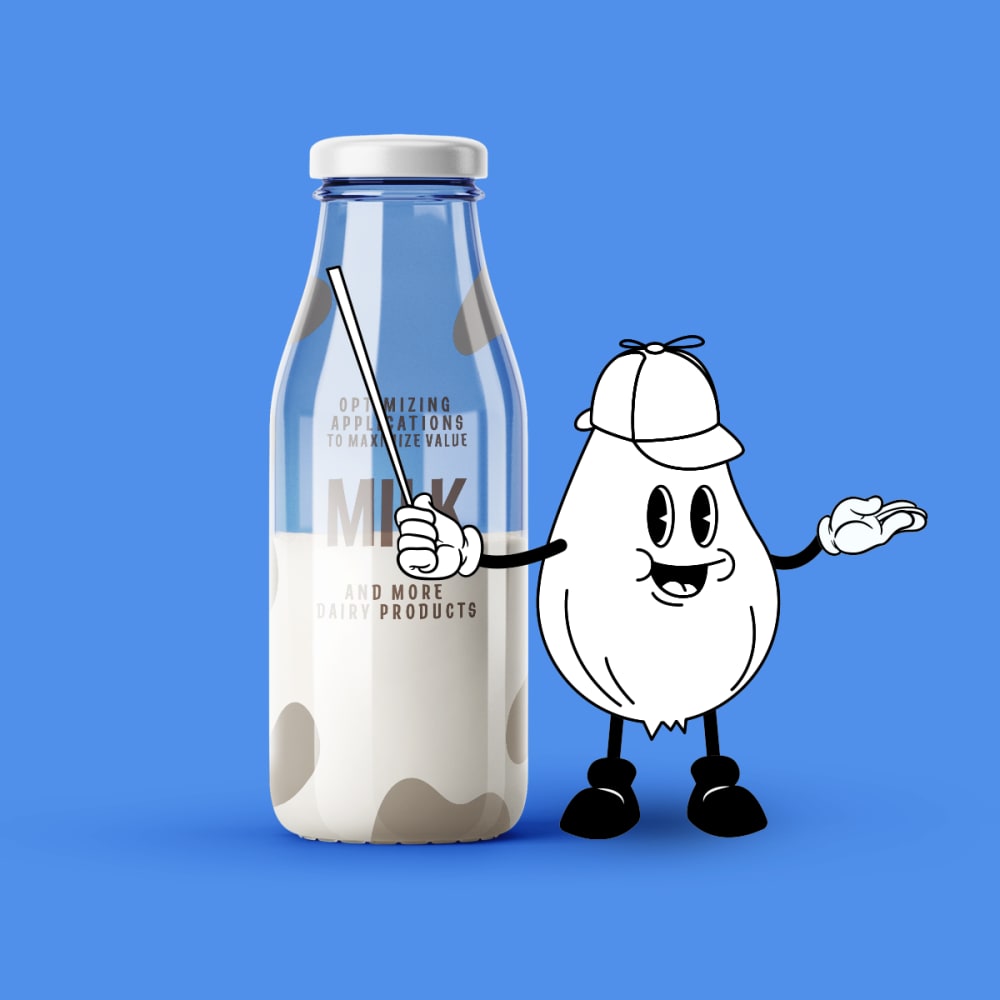Dairy Detective Dossier: Maximizing Value with Smarter Solutions

The detectives gather eagerly in the office, awaiting the arrival of Shallot Holmes. Cornlumbo, fresh from solving another culinary mystery involving his cousin, who almost blew up his lab, is sharing pictures of the meal he received as a thank you. "I never knew cheese could be so criminally delicious," he exclaims, his stomach audibly rumbling.
"Easy now, Cornlumbo," Miss Mapple smiles knowingly.
At that moment, Shallot Holmes enters, “A lover of cheese, are you, Cornlumbo? Well, that’s ideal, as today we're delving deep into dairy—specifically, how smarter analytical methods can significantly enhance product quality, efficiency, and profitability. Pay close attention; the insights we discuss today will help you guide our clients toward better decisions in dairy production."
Holmes begins by highlighting the critical processes in the dairy industry: dehydration, fermentation, creaming, and coagulation. “To consistently achieve the perfect texture in yogurt, the exact fat content in butter, or optimal protein levels in cheese, precise analytical methods are paramount."
The Kjeldahl Mystery Unraveled
“As you may recall from the previous Kjeldahl masterclass I gave,” Holmes continues, "the method is invaluable for accurate protein determination, vital not just nutritionally but also in shaping texture and taste in dairy products. Optimization here means less waste and lower costs."
The Kjeldahl method involves several key steps: digestion, alkalization, distillation, titration, and calculation of protein content. Holmes emphasizes cost-saving innovations such as using Kjeldahl-Micro sample tubes, reducing chemical usage, and the cutting-edge Reaction Detection Sensor (RDS) that determines when a reaction has finished and halts excess NaOH use, saving valuable resources and reducing waste.
Fat Extraction—More than Just Nutritional
Moving on, Holmes describes the significance of fat extraction. “It’s not just about meeting regulatory standards or nutritional labeling,” he explains. “The precise fat content influences the mouthfeel, flavor, and ultimately the market value of dairy products."
Holmes briefly revisits traditional fat extraction techniques:
- Weibull-Stoldt (1892): Highly accurate, involving hydrochloric acid hydrolysis followed by Soxhlet extraction. Ideal for complex matrices like milk and cream but labor-intensive.
- Gerber Method (1938): Utilizes sulfuric acid hydrolysis with centrifugation and measurement using a butyrometer. Quick and simple but requires handling strong acids.
- Mojonnier Method (1893): Employs alkaline hydrolysis combined with solvent extraction (diethyl or petroleum ether). Known for accuracy, but it is very time-consuming and involves hazardous chemicals.
"Thankfully," Holmes states, "our analytical toolkit includes automated solutions such as the FatExtractor E-500 combined with HydrolEx, significantly enhancing efficiency, accuracy, and safety."
Eggcule, impressed, asks, “Is there a way to avoid solvents entirely?”
“Excellent deduction!” Holmes exclaims. “Indeed, Near-Infrared Spectroscopy, or NIR, offers a rapid, non-destructive alternative. No solvents, minimal preparation, and results in seconds."
NIR Spectroscopy—Seeing Beyond the Obvious
Holmes elaborates that NIR technology uses spectral databases and can quickly analyze multiple parameters simultaneously. "It's perfect for incoming milk inspection, production process monitoring, and final quality control—ensuring dairy products meet both consumer expectations and label claims."
The detectives eagerly jot down notes as Holmes discusses practical applications:
- Quickly determining milk quality upon arrival, ensuring supplier payments and rapid processing.
- Precisely timing yogurt fermentation and milk dehydration processes.
- Achieving consistent butter quality by controlling the fat-to-moisture ratio.
- Monitoring cheese coagulation, fermentation, and maturation stages.
"The secret," Holmes concludes, "is NIR calibrations, robust enough to account for environmental variations like temperature and humidity, which could otherwise skew results."
Sharpen Your Dairy Detective Skills!
“Detectives,” Holmes announces, "To learn more, I recommend this webinar to dive deeper into these smarter solutions, helping our clients maximize value across their dairy operations."
- Click here to watch the on-demand webinar, ‘Maximizing Value: Smarter Solutions for the Dairy Industry.’ Together, let’s solve dairy’s greatest mysteries!”
As the detectives prepare to leave, Miss Mapple jokingly remarks, “Let's hope Cornlumbo's digestion can handle all this dairy knowledge!”
Cornlumbo laughs, “Don’t worry, Miss Mapple. Like our analysis, it's all perfectly calibrated!”